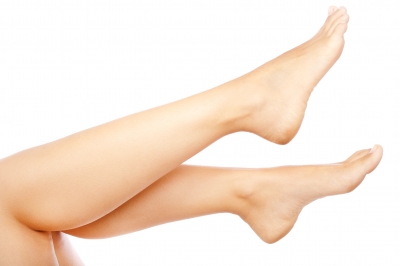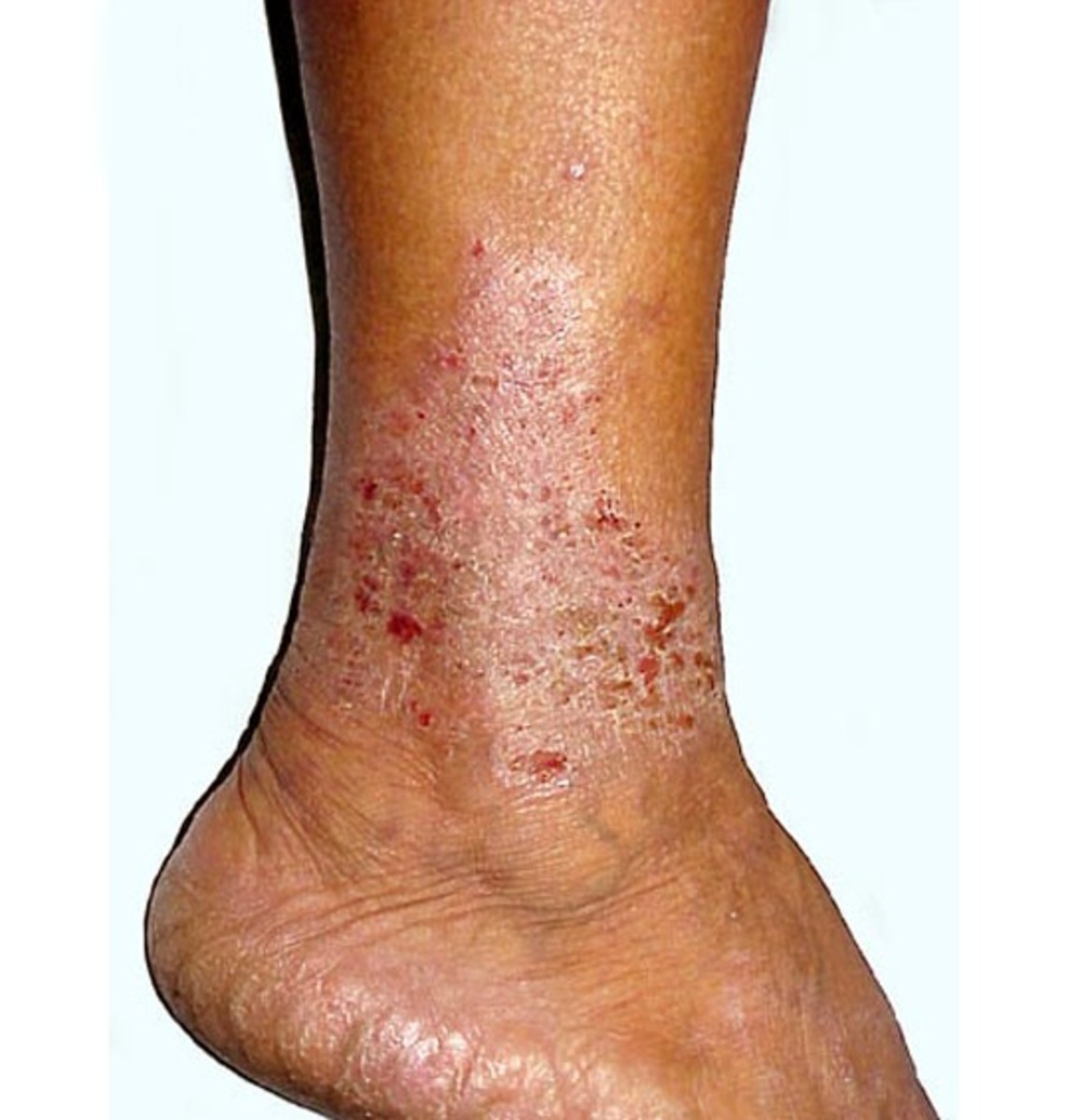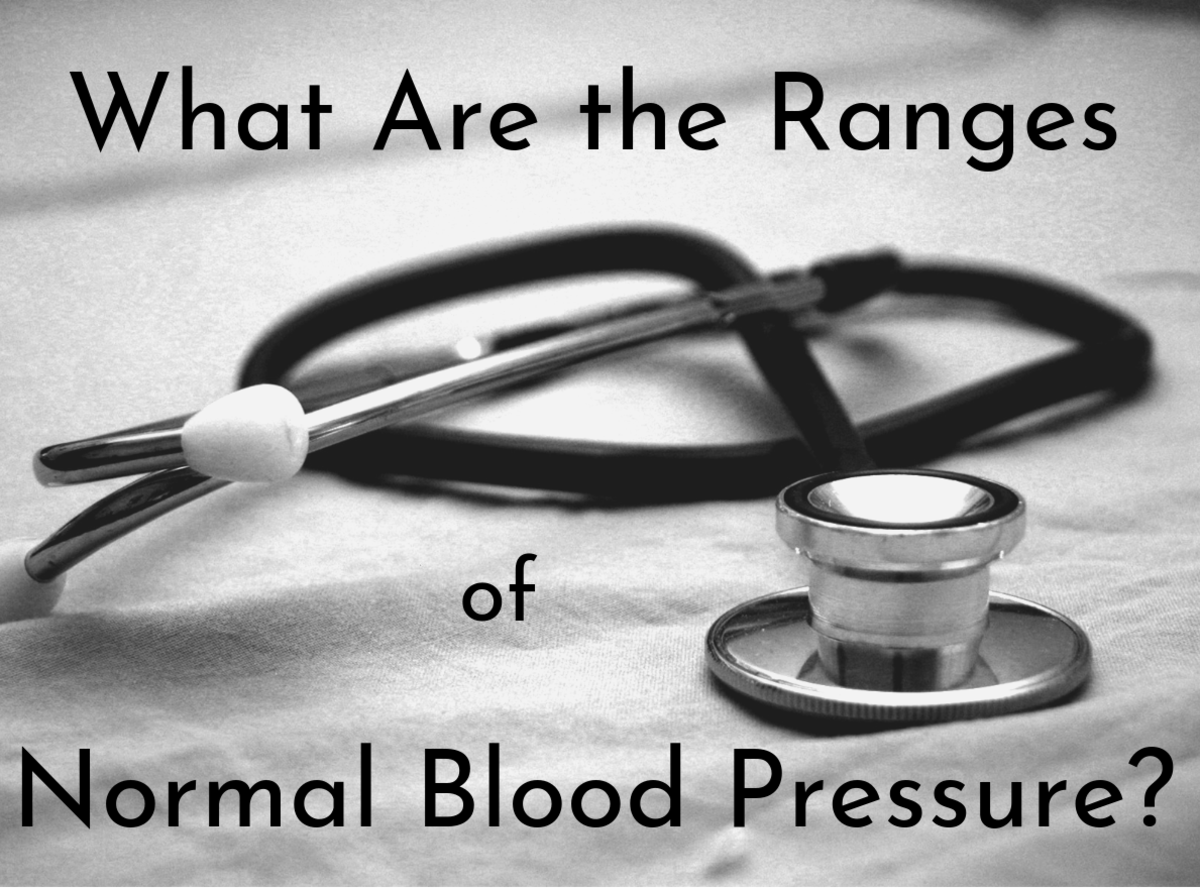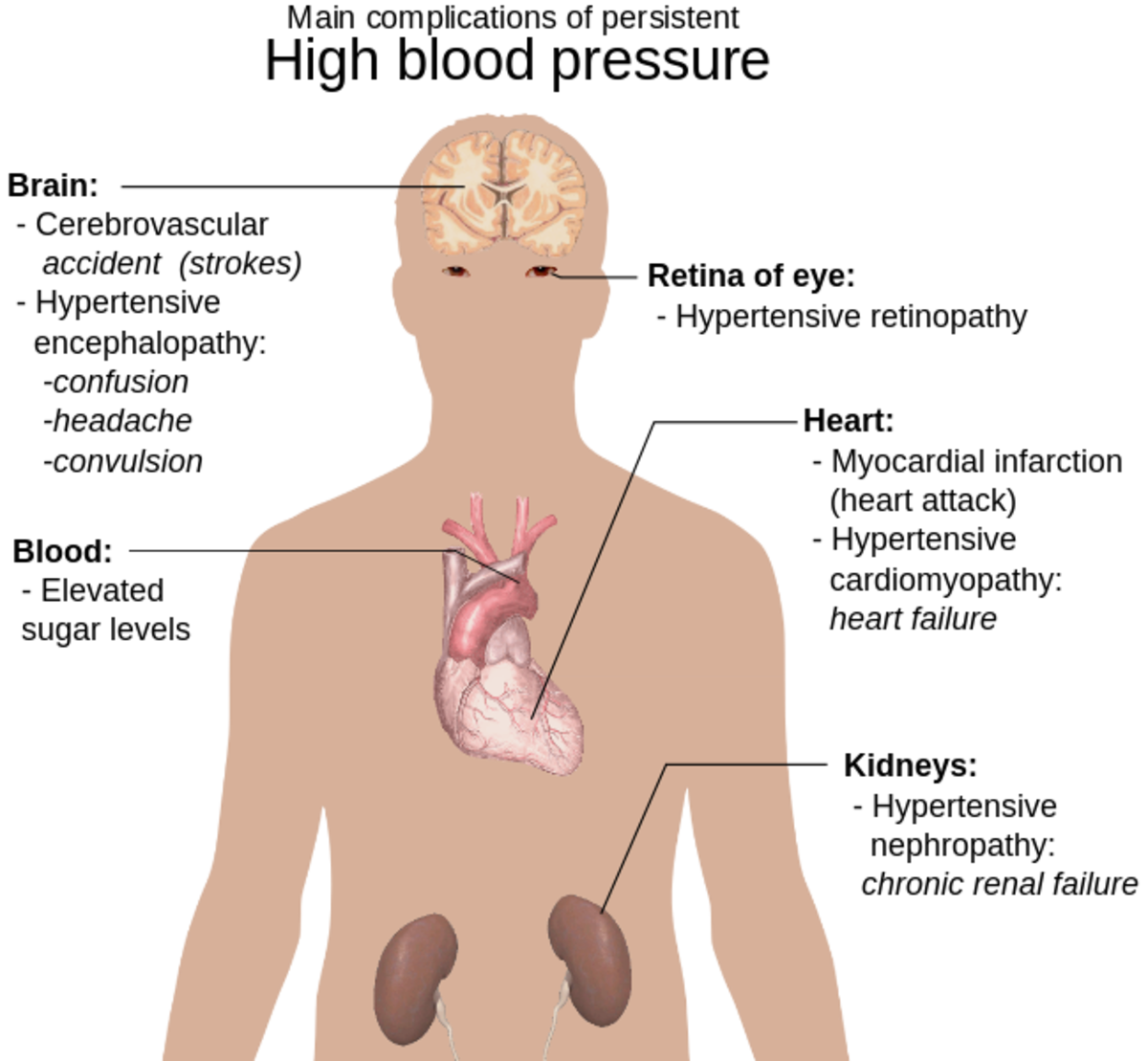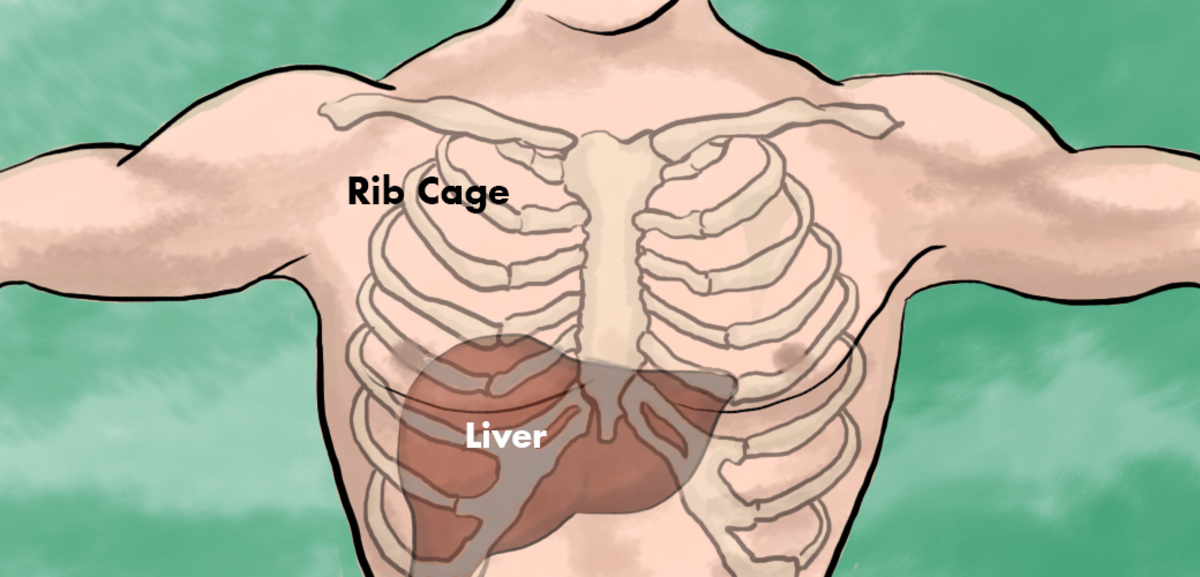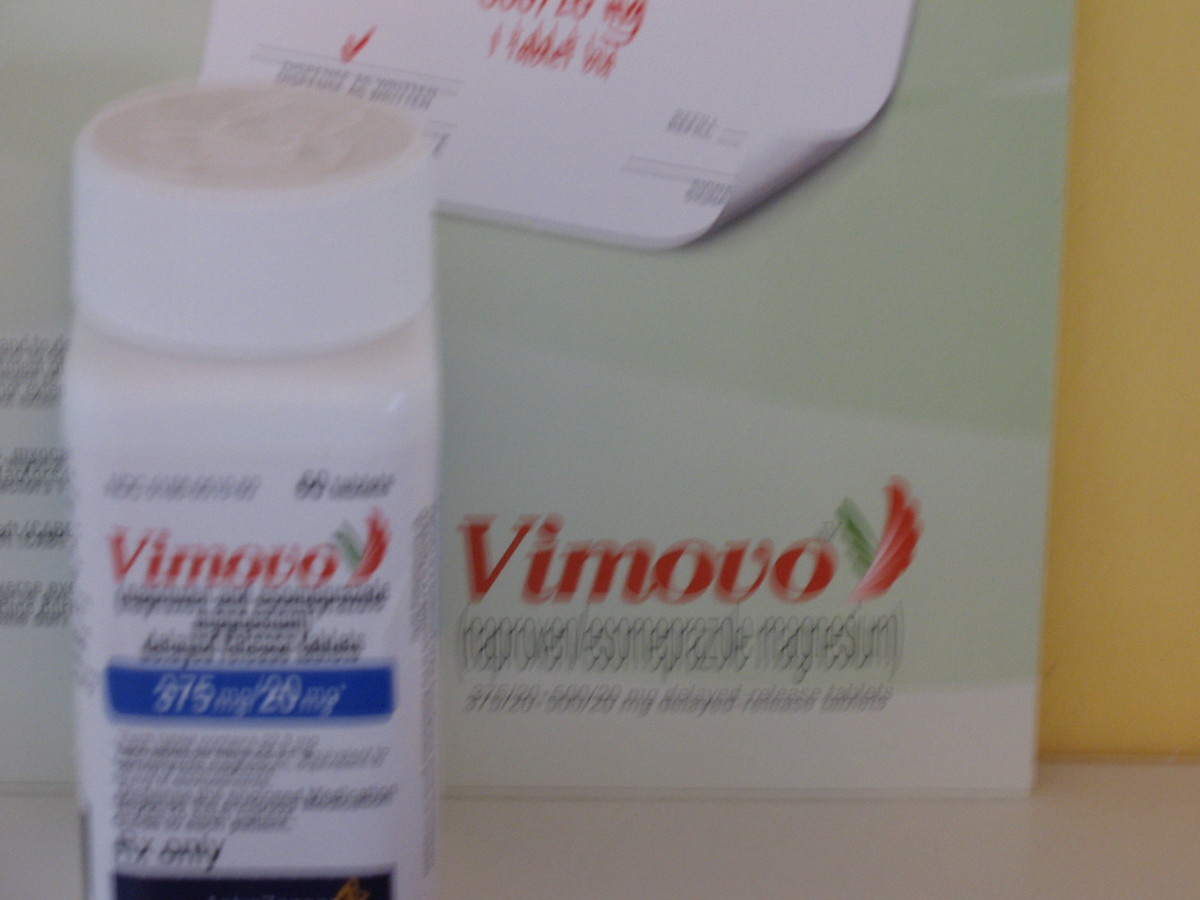Pain and swelling of legs could be a symptom of Chronic Venous Insufficiency

Introduction
My readers will remember my hub Craving Tomatoes (Tomatophagia), and my conclusion that the craving was the result of a Kalium (Potassium) deficiency.
To refresh our memory: Potassium is the chemical element with the symbol K(Kalium), responsible for the proper function of muscles and nerves. It also keeps the electrolyte and acid-base in the body balanced. Most important, it regulates blood pressure.
Concentrated Kalium is also the substance applied by Dr. Jack Kevorkian, the infamous Dr. Death, in his practice of euthanasia, as it is considered the most effective and fast acting neutralizer of the electrical conduction of the heart, inducing immediate heart failure. Concentrated potassium chloride (Kalium chloride) is also used as the last of the lethal injections in the execution of criminals because it stops the heart in just a few minutes.
My readers will remember my complaints ~
- “My legs are irritating the living daylight out of me. To describe: A burning, itching pain, at its best a dull ache, and a feeling of pressure and heaviness.”
-
“The overdose tomatoes did relieve some kind of a bodily disorder I suffer for the past two-three months, something causing uncomfortable and painful swelling of my legs… The swelling is more like inflammation, perhaps of the muscles and I even suspect of the veins, if that is possible. I manage to control the condition by walking, dancing, doing exercises, and standing from time to time instead of sitting. Being horizontal on the bed seems to bring the best relieve.”
-
“… strange, the visual swelling is only in the bending behind my knees and between thigh and body where the veins bend, the rest of the swelling seems to be inside the legs, as if the vesel or muscles or nerves or veins or bones or whatever are inflamed.”
Amy Becherer emphasizes the cause of my craving for tomatoes ~ “.... I have been helping my 89-year old, ex mother-in-law... Her doctor put her on a diuretic for swelling in her lower legs and feet. The diuretic caused her to become potassium deficient....”
Becky Katz confirmed: “..... I suffer a potassium deficiency due to diuretics and blood pressure pills - they also rob calcium from your body. I get leg cramps and sore muscles when I am low on potassium.”
Then Amy Becherer came forward with a possible cause for the swelling of my legs: “.... I hope you are not developing lymphedema…”
My reply: “I've checked lymphedema, but don't relate. I have found, however, another clue - Venous Insufficiency?”
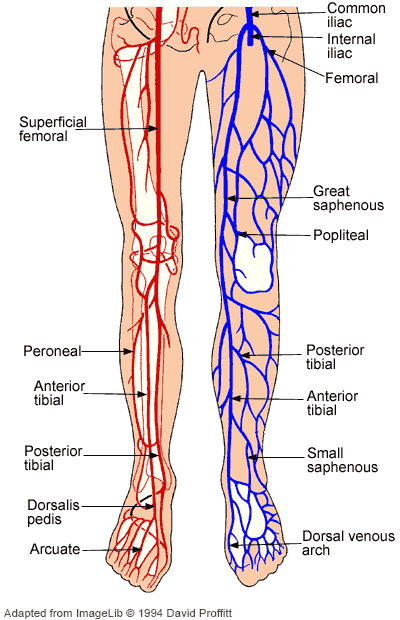
What about veins and their insufficiency?
After a second visit to my doctor and some expensive blood tests, venous insufficiency was indeed diagnosed as an ailment I will have to cope with for the rest of my life. I am not yet sure whether my condition is Chronic Venous Insufficiency or Chronic Venous Hypertension.
What the heck does this mean in any case, was of course the question that sent me straight to my dearest Uncle Google…
I would like to share with my readers a brief summary of two highly recommended articles -
Venous Hypertension
In detail described at wounds-uk.com by Irene Anderson, Senior Lecturer in Tissue Viability, University of Hertfordshire ~
Extract:
“... The venous system is made up of a deep system and a superficial system, which are joined by perforator (joining) veins. Deep veins are held within the muscle fascia of the leg while superficial veins are less supported and are nearer the surface of the leg. All veins in the leg have valves to ensure that venous blood travels back to the heart or from the superficial veins back to the deep veins via the perforators. These valves are particularly important in the lower leg as the blood needs to flow upwards a considerable distance to the heart especially if standing upright. If the valves do not work in the perforator veins, blood is pushed out into superficial veins, increasing the pressure in these vessels….
Venous blood returns to the heart mainly via the deep veins, which are bigger and stronger than the superficial veins, and there are three key mechanisms by which this blood flow is encouraged: Gravity, breathing and the calf-muscle pump.
Being born with clubfeet, and although it had been rectified, my calf muscles never developed in full. Inder-developed calf-muscles pumps therefore seem to be the ‘devil’ behind my ailment ~
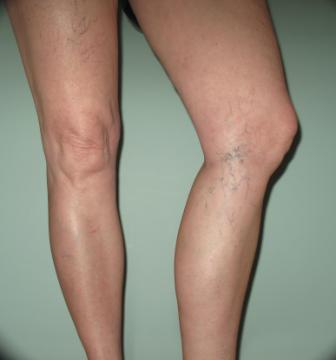
“The calf-muscle pump ~ When blood is pumped into the arteries by the heart, it is pushed forward under high pressure. Only a little of this pressure is left once it has passed through the capillaries into the veins so the action of the muscles provides a pumping action that helps to push the blood up. As the calf muscle contracts, the valves in the deep veins are squeezed and they open to allow the blood to travel upwards. As the calf muscle relaxes the valve closes and creates a negative pressure as the section between valves empties. This negative pressure draws blood from the superficial veins, through the perforators to refill the chamber ready for the next contraction of the calf muscle.
If the valves are incompetent they will allow backflow (reflux) of venous blood in the deep vein and the volume of blood in the lower leg will increase. This increased load will cause a rise in the pressure on the vein wall and will affect other parts of the venous system. As these veins stretch their valves here will not close properly and the volume of blood — and therefore the venous pressure — will increase. As the valves are unable to prevent backflow of blood, chronic venous hypertension results."
(In detail described by Irene Anderson at wounds-uk.com)
Chronic Venous Insufficiency
During my research I stumbled upon an excellent article in emedicine.medscape by Katherine E Brown (DO; Chief Editor: Vincent Lopez Rowe, M.D., DO Consulting Staff, Department of Surgery, University of California at San Diego.
Two to five percent Americans suffer Chronic Venous Insufficiency (CVI), previously known as postphlebitic syndrome and postthrombotic syndrome.
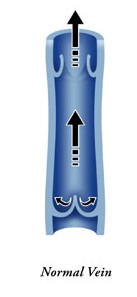
The causes of CVI
- Venous hypertension in diseased veins;
- The absence of, or damage to, venous valves;
- A blood clot formed within a blood vessel and remaining attached to its place of origin, known as a thrombus; (Varicose veins rarely cause CVI. They serve as indicators of venous hypertension, the most common reason for CVI);
- Aging - the venous valves simply lose their efficiency;
- Deep vein thrombosis (DVT), causing backflow and the increasing of venous pressure. This could make venous valves incompetent;
- Little activity minimizes the pump action of calf muscles on venous return, causing higher venous pressure. (Keep in mind that I was born with clubfeet and my calf muscles are not properly developed);
- Obesity;
- Standing or sitting for long periods. This increases venous pressure in dependent lower extremities;
- Smoking.
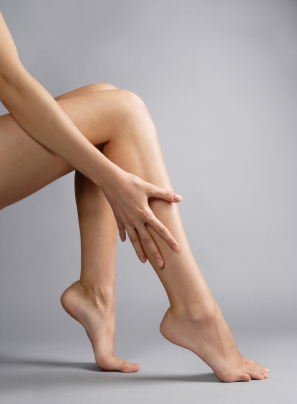
CVI can lead to ~
- Poor cosmesis,
- Leg edema: Damage done to capillary basement membranes by white blood cells results in leg edema. Decreased oxygen delivery to tissues results in local hypoxia; swelling is the body’s strong drive to correct the oxygen deficiency. The result is inflammation and tissue loss.
- Chronic life-threatening infections of the lower extremities.
- Chronic venous stasis ulcers.
- According to the article pain, especially after walking, is a hallmark of the disease, though in my case walking and exercises relieve my pain and uncomfortableness.
- CVI causes lipodermatosclerosis (characteristic changes) to the skin of the lower extremities, which lead to eventual skin ulceration.
- Thrombosis.
Clinical manifestations include the following:
- Leg edema (swelling);
- Lipodermatosclerosis (skin changes).
- Perforator veins bulging into subcutaneous tissue.
Treatment ~
Nonsurgical:
- Leg elevation – (When sitting, legs should be above the thighs. Supine, the legs should be above the level of the heart.)
- Compression stockings – these produce graded pressures from the foot upwards and decrease edema and minimize venous hypertension.
- Unna boots - rolled bandages that contain a combination of calamine lotion, glycerin, zinc oxide, and gelatin.
- Injection sclerotherapy - directly into veins
Surgical Therapy - reserved for those with discomfort or ulcers refractory to medical management:
- Vein ligation - the treatment of choice.
- Subfascial endoscopic perforator surgery (SEPS).
(In detail explained by Katherine E Brown at emedicine.medscape)
Another interesting article about Chronic Venous Insufficiency is available at clevelandclinic.org
If I knew all this years ago, I would have made an effort to develop proper calf muscles. I would have been also more concerned about my daily pottasium/kalium intake. 2000 mg intake per day is recommended by many nutritionists, though the Institute of Medicine 2004 guidelines specified 4000mg per day.
Fruit and vegetables rich in potassium/Kalium ~
(in brackets = mg)
- One papaya (781).
- One cup of prune juice (707).
- One cup of tomato juice (535)
- One baked sweet potato, with skin (508).
- One tablespoon of molasses (498).
- One cup of cubed cantaloupe (494)
- One small banana (467).
- Diced honeydew melon (461).
- One-half of a medium avocado (450).
- One-half of a medium potato, with skin (422).
- One large chopped or sliced tomato (400).
- One-half cup of cooked pinto beans (400)
The rest of the list is available @ http://martiecoetser.hubpages.com/hub/Craving-Tomatoes
© Martie Coetser (April 2012)
Copyright :: All Rights Reserved
Registered :: 2012-04-06 16:03:11 UTC
Title :: Swelling of legs ~ Chronic Venous Insufficiency
Category :: Publication
Fingerprint :: 816d96a59df73f60dff45d3c08b800d75d719e8d717b6277e1715cdbc704545f
MCN :: CWLFY-WLWRH-4F12Y
